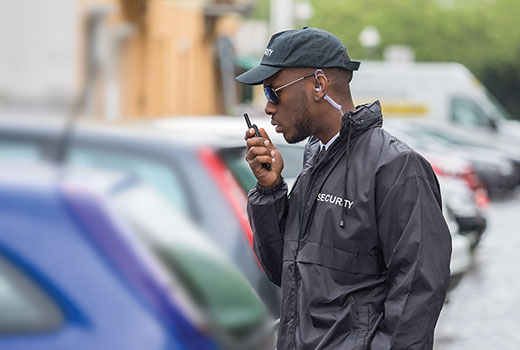 On Nov. 5, 2017, First Baptist Church of Sutherland Springs, Texas, experienced a tragedy that is the nightmare of every pastor and church member.
On Nov. 5, 2017, First Baptist Church of Sutherland Springs, Texas, experienced a tragedy that is the nightmare of every pastor and church member.
Devin Patrick Kelley killed 26 people in and around the church and wounded 20 others. Immediately after this horrific mass murder, attention focused on church security and safety — and rightly so.
Churches, with their services and activities throughout the week, offer people of evil intent what law enforcement refer to as “target-rich environments.” That means they assemble large numbers of people in a small area where an assailant can potentially harm or kill numerous victims. In addition, having so many people within close proximity in a building also raises the potential for injury and loss of life in the event of a fire or natural disaster. Now, more than ever, it is imperative that churches have safety plans and church safety teams.
Often, churches want to form such plans and teams but do not know where to start or what steps to take. The following list, though not exhaustive, offers 10 steps churches can take to protect their members from attacks and natural disasters.
Consult your insurance company and attorney regarding church safety measures and safety policies. Insurance companies often have security and safety suggestions for churches. They might also have church safety/security kits that congregations can use to create and implement church safety policies and safety teams. Church attorneys can help congregations understand state statutes related to issues like fire safety, safety codes, and the regulation of firearms on church campuses. Church insurance companies and attorneys can help churches start out on the right track to creating safe and secure campuses.
 Develop a safety/security manual that contains your church’s policies and procedures. Churches need to ask the question: “What if [blank] happens?” They should think through different scenarios involving both man-made and natural disasters. For example: What if a tornado hit your church on a Sunday morning during worship? What if a church member had a heart attack during the worship service? What if a child suffered an injury on your church’s campus requiring response by EMS? What if an active shooter parked in your church’s parking lot and attempted to enter your facilities? While this list is not exhaustive, a church safety manual would contain policies the church could follow to respond to each of these scenarios.
Develop a safety/security manual that contains your church’s policies and procedures. Churches need to ask the question: “What if [blank] happens?” They should think through different scenarios involving both man-made and natural disasters. For example: What if a tornado hit your church on a Sunday morning during worship? What if a church member had a heart attack during the worship service? What if a child suffered an injury on your church’s campus requiring response by EMS? What if an active shooter parked in your church’s parking lot and attempted to enter your facilities? While this list is not exhaustive, a church safety manual would contain policies the church could follow to respond to each of these scenarios.
Have a church safety consultation company conduct a church safety audit. In conducting safety audits, such companies evaluate the property, resources, policies and procedures of the church in relation to church safety. They present churches with their results and with recommendations that churches can follow to provide a safer environment for their church’s members and
guests.
Have a member of your local law enforcement agency visit your property and provide advice. Members of your local law enforcement community can give churches valuable advice regarding church safety and protection. Give the member of law enforcement a tour of your campus. Show him or her your policies and procedures. The visit will help deepen your relationship with local law enforcement, allow them to familiarize themselves with your campus, and provide valuable feedback on how you can improve your church’s safety posture.
Create a church safety team. This team would be responsible for addressing the safety issues of the church. Church safety encompasses more than church security. Such a team would address medical emergency, disaster and security needs of the church. Seek people who have expertise in these areas to comprise your team. They might be paramedics, law enforcement officers, military personnel or individuals who’ve served in these roles in the past. Look for folks who are even-keeled and calm under pressure.
Decide how you will approach the issue of firearms in the church. Different states have different laws regarding the permissibility of firearms on church campuses. Some states prohibit firearms on any church campus. Other states allow concealed weapon permit holders to carry firearms on a church’s campus if the leaders of the congregation give those individuals such permission. Church leaders and congregations must decide how they will approach this issue. It is wise for churches to consult their insurance company and attorney regarding this decision.
 Consider hiring off-duty law enforcement officers to provide security during church services. Some churches hire off-duty officers because they are already trained with firearms and are knowledgeable regarding protecting people and property. Law enforcement officers also provide a visible deterrence by working at the church in uniform and parking their official vehicles at strategic points as a deterrent to attackers. They also can control traffic when worship services begin and end.
Consider hiring off-duty law enforcement officers to provide security during church services. Some churches hire off-duty officers because they are already trained with firearms and are knowledgeable regarding protecting people and property. Law enforcement officers also provide a visible deterrence by working at the church in uniform and parking their official vehicles at strategic points as a deterrent to attackers. They also can control traffic when worship services begin and end.
Purchase a camera system for the church. Cameras are a force multiplier for church safety teams. They help teams maintain security and safety during services and provide a deterrent when churches are unoccupied. Cameras can monitor multiple areas of the church’s campus, helping safety teams to monitor and identify potential threats before they reach an area where members are assembled.
Limit access points during services and activities. Churches keep a delicate balance between promoting safety and being accessible to the public. The more access points that are open when services and activities occur, the increased probability exists that an intruder who intends harm can enter the campus. Limiting points of access during worship services and activities decreases the probability that an intruder can gain access to the facility unobserved.
Communicate safety policies and procedures. It’s imperative that congregations are aware of the reasons the church safety policies and safety team exist. Communicating this information to the congregation helps members feel safer, informs them of policies and procedures, and better prepares them regarding what they should do if various critical incidents occur on the church’s campus.
While the above list is not exhaustive, it does provide churches who want safe campuses with steps they can begin to take to achieve that goal.
We can never predict if and when natural or man-made disasters or events might occur on our church campuses, but we can begin to take measures to protect our congregations against such events or to help them should critical incidents occur.
Churches have a responsibility to protect their flocks. These tips help them to start the journey toward that goal.
— Tim McKnight is associate professor of missions and youth ministry and director of the Great Commission Center at Anderson University. He is an NRA-certified pistol instructor and martial arts instructor who teaches self-defense skills through his company, Peaceful Warrior, LLC.
Related stories:
Courier Survey: Churches Take Measures to Protect Members
Pastor: Presence of Safety Team Brings Comfort to Members
Staying Alert Means Staying Alive
Keeping Children Safe at Church

